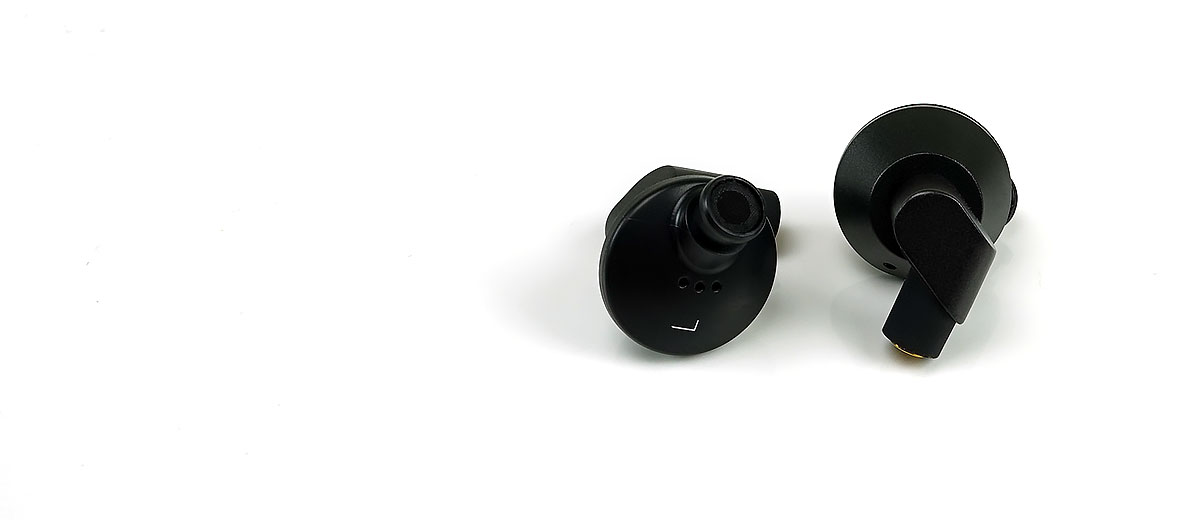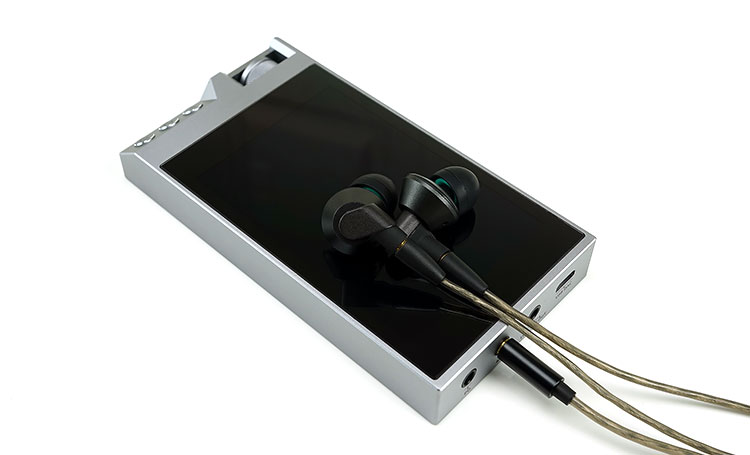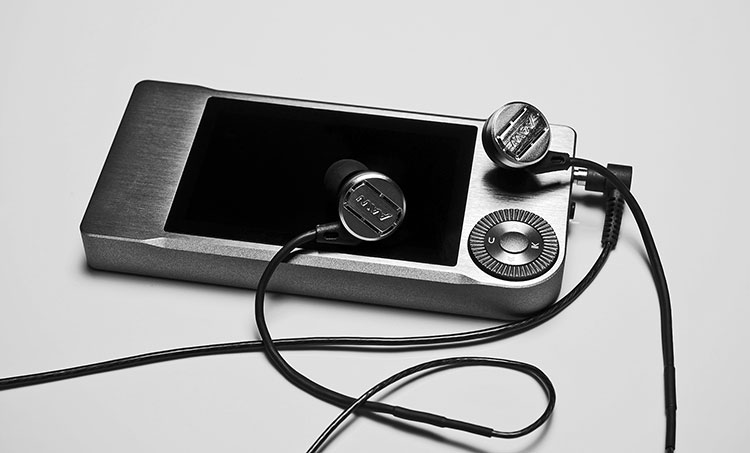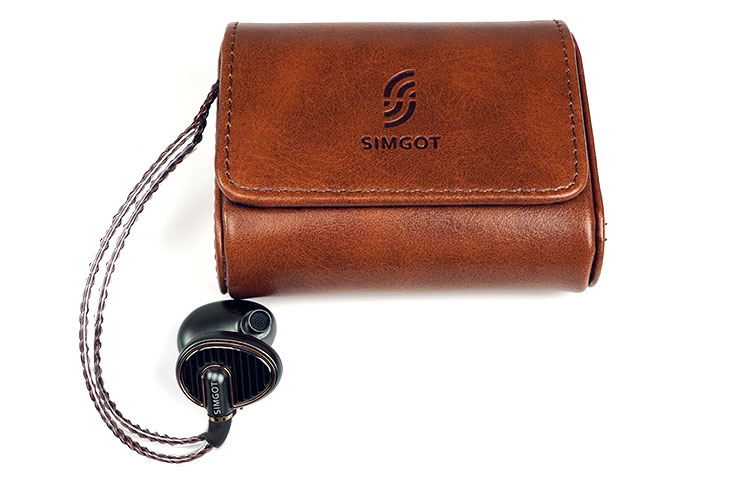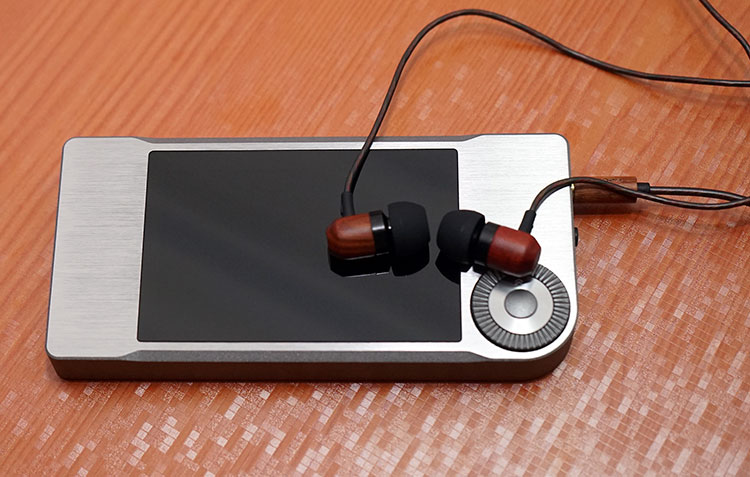Matchability
Efficiency
The F5 is rated at 32-ohms and 102dB which is pretty much par for the course numbers for a medium efficiency dynamic driver IEM. Voltage control will not be an issue and neither will it be fussy with the majority of smartphone and DAP noise floors with a fairly black background on the likes of the LG G6, Axon 7, FiiO’s own DAPs including the X1 2nd gen and the X5iii.
It does require a bit more volume though than efficient BA IEMs so you will find yourself turning the dial up a bit more on the F5 than say a YK1 single BA and the Campfire Audio BA range but it is not entirely unsurprising for a single DD. As an example, the single ended cable connected to the X5iii sat comfortably around 60-65 marker in low gain compared to the Noble Audio X dual BA which was happier around 10-15 steps lower.
Balanced
The F5 using the balanced cable had similar impressively low noise levels on all of the balanced outputs I tried including the DX200, X7/AM3 right up to the ALO Audio Continental Dual Mono which can throw up background hiss easily on efficient IEMs.
Amping
Power & Control
What the F5 does enjoy is a quality signal or good output power from whatever amp it is plugged into to sound at its best. Slightly weaker amps tended to just leave the treble performance a little brittle around that 5-7k marker whereas a better amp, say an Alien+ and FiiO’s own X5iii produced a much smoother and more natural sounding top end. I dare say FiiO have referenced the tuning of the F5 to fit perfectly with their own DAPs.
Balanced FiiO
Going balanced will produce even better results though the X5iii’s own balanced output is perhaps not the best performer out of the bunch. If you are staying in the FiiO camp then the AM3 balanced module for the X7 is a better fit with a more detailed and dynamic sounding signature than the X5iii.
Balanced 3rd Party
iBasso’s DX2000 6 Vrms of power in its balanced Amp1 card is a spectacular upgrade. Again no noise, no hiss and tons of dynamics with a natural top end which, at this price range, I have not heard before. Even ALO’s CDM seemed a more than capable pairing with zero noise in low gain and a warmer smoother sound than the DX200 though I highly doubt this is a pairing most will have in mind.
Future Pairings
The launch of the FiiO Q1 Mark II and the X3 3rd gen with balanced outputs a few days ago seems the pairing with the most potential on a budget level and I think this is where you want to consider the F5 in terms of best fit for everyday use.
Select Comparisons
AAW Nebula One
SG$149
Technicality
The Nebula One has 16-ohm and 100dB SPL rating so it doesn’t need quite as much voltage from sources with DAP pairings running lower volumes than the F5. For example, the X5iii/Nebula One pairing was quite comfortable at 50-55 in low gain compared to the 60-65 for the F5 in unbalanced mode.
Low background noise or hiss presence is also very good with the Nebula One on most sources in single ended mode. The One does not have a detachable cable so there is no balanced alternative to try.
Tonality
Tonally the Nebula One has a warmer sounding tonality than the F5 with higher mid-bass and upper bass elevation sounding a bit woolier and more bloated than the more linear mid-bass to lower mids of the F5. Instrumental passages are a little thicker sounding on the One compared to the slightly more accurate natural timbre of the F5. Treble on the F5 is a bit brighter from 5-7k compared to the more laid back but slightly brittle signature of the Nebula one.
Staging wise the u-shaped response of the F5 is more spacious sounding than the neutral mids of the Nebula One. Vocals on the Nebula one are a bit more forward sounding for male vocals though I prefer the F5 higher pitched vocals which have an airier quality and more substance than the Nebula One.
SIMGOT EN700 BASS
$109.99
Technicality
The EN700 BASS is rated at 16 ohms and 101dB so it is fairly easy on the voltage for reasonable volume but it is not an overly sensitive IEM in general. Noise and amping performance is on a similar level to the Nebula One and slightly easier going in terms of voltage requirements and volume control over the F5 in unbalanced mode. Using the X5iii again as the benchmark it also comes in 10 steps lower at 50-55 in volume compared to the F5’s 60-65 step low gain comfort zone.
Tonality
The EN700 Bass is not quite as dipped sounding in the mids as the F5 however it is not as clean and controlled sounding, especially in the bass performance which for my money is more accurate sounding on the F5.
Mids on the EN700 Bass are more neutral sounding but not quite as open sounding as the F5 and vocals are not quite as forward. They also have an uptick in energy as they move through the upper mids to lower treble, perhaps more so than the F5 which tends to have a more muted upper mids performance around the 4k marker. The EN700 Bass has a fuller sounding lower treble than the F5 though both tail off post 7k.
Staging wise both will sound reasonably spacious but I prefer the depth and layering on the F5 with its better lower mid-range instrumental positioning and slightly more forward vocals. I get a more engaging and holographic presentation with the F5’s imaging whereas the EN700 BASS is less precise.
Shozy Zero
$59.99
Technicality
The Zero is a woody single DD IEM rated at 32-ohms and 94dB which means good amping will play a role as it is even less efficient than the F5. Portable amping is not wholly necessary though with the Zero though it can be driven just fine with good portable amps such as the E12a from FiiO and the RX from ALO. I think most though will find a good quality DAP will more than suffice. The good news is though it should stay a relatively hiss free experience with low noise floors on the majority of DAPs and portable amps much like the F5.
Tonality
The Zero has a gentle u-shaped signature with a fuller sounding mid to upper bass response, a warm and thick noted mid-range and a slight dip in the vocal presence compared to the boosted 2k mids of the F5. Treble on the Zero is relaxed, natural sounding with good body and sounds easier going than the F5’s perkier lower treble and doesn’t get brittle on poor amps.
The F5, by contrast, is a cleaner sounding tonality with a more linear mid to upper bass curve that sounds a little less bloated than the Zero giving some much-needed space and air to its mids. The timbre on the Zero is warm to euphoric and you will find it has a touch more body but some of that is upper bass bleed so it is not quite as precise or accurate sounding.
Our Verdict
I am impressed with the F5, more than I thought I would be. Its inclusion of a balanced option is what should seal the deal for anyone sporting a balanced output source. For $64.99 you also get Android/iOS compatibility in one unbalanced cable, a decent set of tips, good build quality, an all new weather sealed hard case and a tonal quality that is far more balanced and mature sounding than previous efforts in this price category. That is very good value.
My only concern is that quite a lot of balanced output components are rather more expensive and those wishing to go balanced might prefer aftermarket balanced cables and higher end IEMs to match. That would be a shame if it not for the fact FiiO just launched a whole new serious of budget balanced amping solutions that make the F5 a far more valuable and relevant pairing.
Technical Specifications
- Type Single Dynamic Driver
- Driver 1 x 13.6mm Titanium DD
- Freq Range 20Hz – 40kHz
- Impedance 32Ω
- Sensitivity 102 dB /mW
- Cable 1.2m, replaceable (MMCX) x 2
- Jack 3.5mm gold plated straight
- Weight 21g with default cable
- Casing material Anodised and galvanized aluminum alloy




